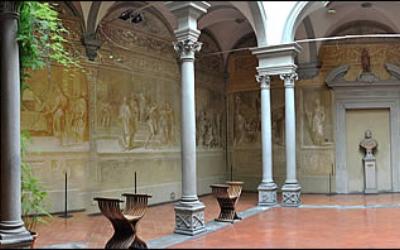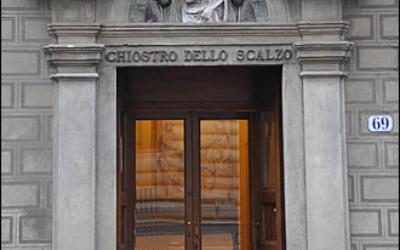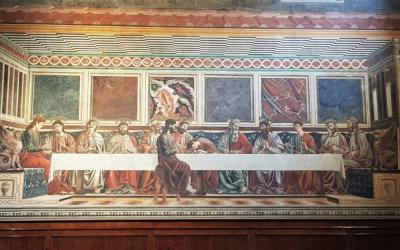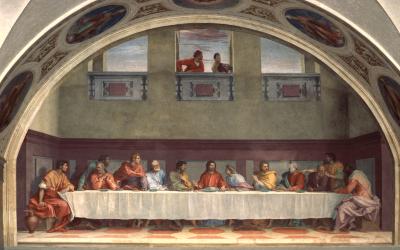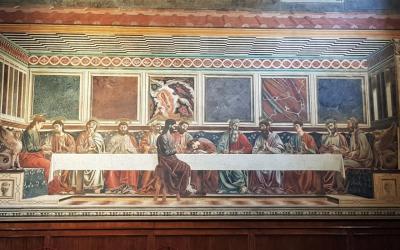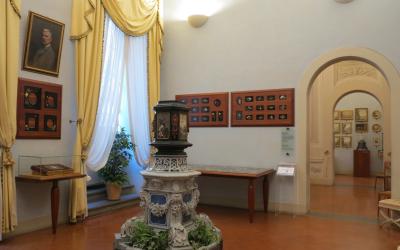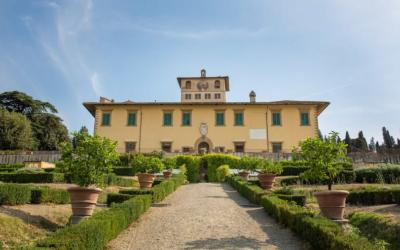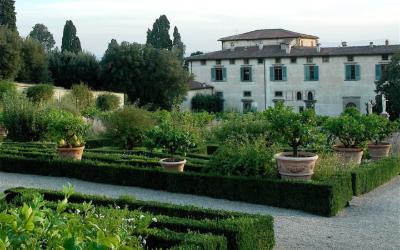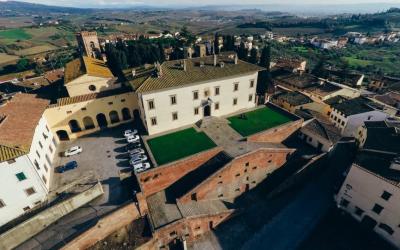The Cloister was the atrium of the chapel of the Company of the Disciplinati of Saint John the Baptist, known as lo Scalzo, founded in 1376.
The small cloister by Giuliano da Sangallo, entirely frescoed by Andrea del Sarto and Franciabigio, preserves one of the most important cycles of Florentine painting of the early sixteenth century.
-
Opening days
Monday to Saturday, 1st and 3rd Sunday of the month
-
Opening times
8:30 am - 1:50 pm (last admission 1:20 pm)
-
Closing
January 1st, December 25th, and the Mondays following opening Sundays
-
Extra Opening times
- December 8th: Special opening (8:30 am - 1:50 pm, last admission 1:20 pm)
- December 26th: Regular opening (8:30 am - 1:50 pm, last admission 1:20 pm)
- January 5th: Special opening (8:30 am - 1:50 pm, last admission 1:20 pm)
- Web Chiostro dello Scalzo
-
Feature List
- Info line
- Wheelchair accessible
Above the entrance door shines, after the restoration of the entire façade, the glazed terracotta lunette attributed to Giovanni della Robbia, depicting Saint John the Baptist against a blue background with the camel skin and the golden cross, flanked by two confraternity brothers of the Company, shown holding the hairshirt and wearing the black tunic used for religious ceremonies.
The small cloister, divided by slender columns with Corinthian-style capitals, was frescoed by Andrea del Sarto between 1509 and 1526 with the Stories of Saint John the Baptist and the four virtues—Faith, Hope, Charity, and Justice—beside the access doors.
Giorgio Vasari recalls in his Lives the moment of the commission for the frescoes:
“The men of the Company known as dello Scalzo, dedicated to Saint John the Baptist, were accustomed to gather in Florence at the top of Via Larga above the houses of the Magnificent Ottaviano de’ Medici, opposite the garden of San Marco. The Company had in those days been built by many Florentine craftsmen, who, among other things, had erected a small courtyard supported by some not very large columns. And so, seeing that Andrea was rising in reputation as an excellent painter, they resolved—being richer in spirit than in money—that he should paint around said cloister, in twelve chiaroscuro panels, that is, in fresco with terretta, twelve stories from the life of Saint John the Baptist.”
The work was thus executed in the elegant technique of monochrome—a chiaroscuro without colors—recounting in ten scenes the events of the saint, patron of Florence, from his birth to the famous dance of Salome and his beheading, from the baptism of the multitudes to the preaching in the desert. Andrea del Sarto himself was a member of the confraternity, and his frescoes perfectly convey a way of life inspired by sober and essential spirituality.
Andrea del Sarto, however, was not the only executor of the frescoes: in 1518–1519, during his stay in France, Franciabigio painted The Blessing of Saint John the Baptist as He Departs for the Desert and The Meeting of Christ with Saint John the Baptist.
Where
via Cavour, 69 - 50123 Firenze (FI)

